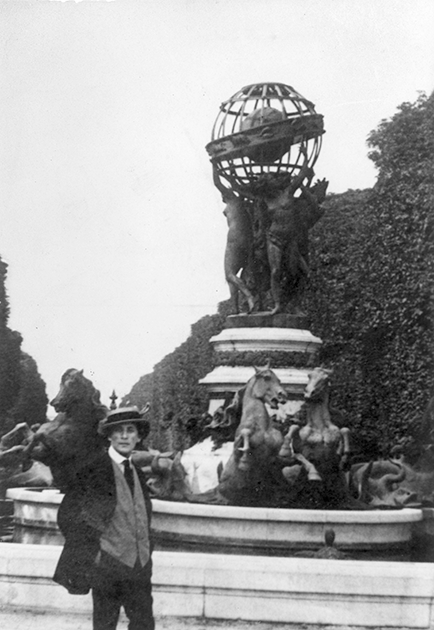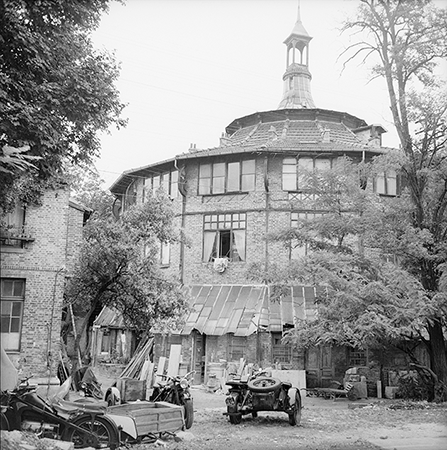20th Century & Contemporary Art Evening Sale
New York Auction 15 November 2022
1
Ilana Savdie
Marimonda Desplegada
Estimate $50,000 - 70,000
Sold for $176,400
Create your first list.
Select an existing list or create a new list to share and manage lots you follow.
2
Danica Lundy
Miss Fist Kiss
Estimate $80,000 - 120,000
Sold for $189,000
Create your first list.
Select an existing list or create a new list to share and manage lots you follow.
3
Lauren Quin
Arrow
Estimate $70,000 - 100,000
Sold for $163,800
Create your first list.
Select an existing list or create a new list to share and manage lots you follow.
4
Avery Singer
Untitled
Estimate $1,500,000 - 2,000,000
Sold for $1,724,000
Create your first list.
Select an existing list or create a new list to share and manage lots you follow.
5
Rashid Johnson
Standing Broken Men
Estimate $1,000,000 - 1,500,000
Sold for $1,724,000
Create your first list.
Select an existing list or create a new list to share and manage lots you follow.
6
Pablo Picasso
Mousquetaire buste
Estimate $2,500,000 - 3,500,000
Sold for $2,450,000
Create your first list.
Select an existing list or create a new list to share and manage lots you follow.
7
Julie Mehretu
Tsunemasa (next to Kaija)
Estimate $4,000,000 - 6,000,000
Sold for $4,386,000
Create your first list.
Select an existing list or create a new list to share and manage lots you follow.
8
Cy Twombly
Untitled
Estimate $35,000,000 - 45,000,000
Sold for $41,640,000
Create your first list.
Select an existing list or create a new list to share and manage lots you follow.
9
René Magritte
Le météore
Estimate $4,000,000 - 6,000,000
Sold for $4,265,000
Create your first list.
Select an existing list or create a new list to share and manage lots you follow.
10
Amy Sherald
Pilgrimage of the Chameleon
Estimate $1,800,000 - 2,500,000
Sold for $2,087,000
Create your first list.
Select an existing list or create a new list to share and manage lots you follow.
11
Loie Hollowell
Lick, Lick in Purple, maroon-yellow
Estimate $1,000,000 - 1,500,000
Sold for $1,361,000
Create your first list.
Select an existing list or create a new list to share and manage lots you follow.
12
Tom Wesselmann
Mouth #14 (Marilyn)
Estimate $3,000,000 - 5,000,000
Sold for $3,236,500
Create your first list.
Select an existing list or create a new list to share and manage lots you follow.
13
René Magritte
Le coup de grâce
Estimate $1,500,000 - 2,000,000
Sold for $1,966,000
Create your first list.
Select an existing list or create a new list to share and manage lots you follow.
14
Anna Weyant
Bum
Estimate $200,000 - 300,000
Sold for $390,600
Create your first list.
Select an existing list or create a new list to share and manage lots you follow.
15
Mark Bradford
He Barked Just Like a Watchdog
Estimate $4,000,000 - 6,000,000
Sold for $4,870,000
Create your first list.
Select an existing list or create a new list to share and manage lots you follow.
16
Mark Grotjahn
Untitled (Circus No. 12 Face 44.30)
Estimate $8,000,000 - 12,000,000
Sold for $9,809,000
Create your first list.
Select an existing list or create a new list to share and manage lots you follow.
17
Marc Chagall
Le Père
Estimate $6,000,000 - 8,000,000
Sold for $7,404,500
Create your first list.
Select an existing list or create a new list to share and manage lots you follow.
18
Marlene Dumas
Snow White in the Wrong Story
Estimate $3,500,000 - 4,500,000
Sold for $3,781,000
Create your first list.
Select an existing list or create a new list to share and manage lots you follow.
19
María Berrío
He Loves Me, He Loves Me Not
Estimate $500,000 - 700,000
Sold for $1,603,000
Create your first list.
Select an existing list or create a new list to share and manage lots you follow.
20
Alex Katz
The Grey Dress
Estimate $1,200,000 - 1,800,000
Sold for $2,208,000
Create your first list.
Select an existing list or create a new list to share and manage lots you follow.
21
Yayoi Kusama
All The Eternal Love
Estimate $800,000 - 1,200,000
Sold for $1,966,000
Create your first list.
Select an existing list or create a new list to share and manage lots you follow.
22
Alexander Calder
Plutôt jaune
Estimate $1,500,000 - 2,000,000
Sold for $1,482,000
Create your first list.
Select an existing list or create a new list to share and manage lots you follow.
23
Amy Sherald
Madame Noire
Estimate $1,000,000 - 1,500,000
Create your first list.
Select an existing list or create a new list to share and manage lots you follow.
24
Jean-Michel Basquiat
To Repel Ghosts
Estimate $7,000,000 - 10,000,000
Sold for $7,862,500
Create your first list.
Select an existing list or create a new list to share and manage lots you follow.
25
This lot is no longer available.
26
Yayoi Kusama
Nets Blue
Estimate $2,500,000 - 3,500,000
Sold for $2,450,000
Create your first list.
Select an existing list or create a new list to share and manage lots you follow.
27
Lucy Bull
Untitled
Estimate $100,000 - 150,000
Sold for $478,800
Create your first list.
Select an existing list or create a new list to share and manage lots you follow.
28
Willem de Kooning
Untitled
Estimate $4,000,000 - 6,000,000
Sold for $4,870,000
Create your first list.
Select an existing list or create a new list to share and manage lots you follow.
29
Milton Avery
Hot Moon
Estimate $1,800,000 - 2,500,000
Sold for $2,208,000
Create your first list.
Select an existing list or create a new list to share and manage lots you follow.
30
Amoako Boafo
Pink Shorts
Estimate $400,000 - 600,000
Sold for $403,200
Create your first list.
Select an existing list or create a new list to share and manage lots you follow.
31
Rashid Johnson
Untitled Anxious Collage
Estimate $500,000 - 700,000
Sold for $567,000
Create your first list.
Select an existing list or create a new list to share and manage lots you follow.
32
Joan Mitchell
Cobalt
Estimate $3,000,000 - 4,000,000
Sold for $3,418,000
Create your first list.
Select an existing list or create a new list to share and manage lots you follow.
33
Andy Warhol
Oxidation
Estimate $2,000,000 - 3,000,000
Sold for $2,450,000
Create your first list.
Select an existing list or create a new list to share and manage lots you follow.
34
Alexander Calder
Petite croix
Estimate $3,500,000 - 4,500,000
Sold for $4,023,000
Create your first list.
Select an existing list or create a new list to share and manage lots you follow.
35
This lot is no longer available.
36
Willem de Kooning
Event in a Barn
Estimate $2,500,000 - 3,500,000
Sold for $3,055,000
Create your first list.
Select an existing list or create a new list to share and manage lots you follow.
37
Pablo Picasso
Paysage au pin
Estimate $1,200,000 - 1,800,000
Sold for $1,482,000
Create your first list.
Select an existing list or create a new list to share and manage lots you follow.
38
Mickalene Thomas
I Can’t See Me Without You
Estimate $350,000 - 550,000
Sold for $441,000
Create your first list.
Select an existing list or create a new list to share and manage lots you follow.
39
Balthus
La Sieste
Estimate $700,000 - 1,000,000
Sold for $1,058,500
Create your first list.
Select an existing list or create a new list to share and manage lots you follow.
40
Andy Warhol
Nosepicker I: Why Pick on Me (The Broad Gave Me My Face But I Can Pick My Own Nose)
Estimate $300,000 - 500,000
Sold for $491,400
Create your first list.
Select an existing list or create a new list to share and manage lots you follow.
41
Andy Warhol
Living Room
Estimate $250,000 - 450,000
Sold for $315,000
Create your first list.
Select an existing list or create a new list to share and manage lots you follow.
42
Robert Motherwell
Open No. 25: In Blue with Variations
Estimate $900,000 - 1,200,000
Sold for $2,329,000
Create your first list.
Select an existing list or create a new list to share and manage lots you follow.
43
Luc Tuymans
Absence
Estimate $400,000 - 600,000
Sold for $453,600
Create your first list.
Select an existing list or create a new list to share and manage lots you follow.
44
Ernie Barnes
Slam Before the Storm
Estimate $300,000 - 400,000
Sold for $604,800
Create your first list.
Select an existing list or create a new list to share and manage lots you follow.
45
Carmen Herrera
Noche Verde
Estimate $500,000 - 700,000
Sold for $567,000
Create your first list.
Select an existing list or create a new list to share and manage lots you follow.
46
Anne Truitt
Autumn Dryad
Estimate $400,000 - 600,000
Sold for $567,000
Create your first list.
Select an existing list or create a new list to share and manage lots you follow.

![Portrait of the artist’s parents, Zahar and Feiga-Ida Chagall. Image: ©Archives Marc and Ida Chagall, Paris [right] The Chagall Family in Vitebsk, c. 1908-1909. Image: ©Archives Marc and Ida Chagall, Paris](https://phillips.vo.llnwd.net/v1/web_dev/lot-component/170179_FIG 2-3_9059a4c1-c779-4f1a-8f03-515641cb3d90.png)

![[left] Detail of the present work. [right] Maurice de Vlaminck, André Derain, 1906, The Metropolitan Museum of Art, New York. Image: © The Metropolitan Museum of Art. Image source: Art Resource, NY, Artwork: © 2022 Artists Rights Society (ARS), New York](https://phillips.vo.llnwd.net/v1/web_dev/lot-component/170179_FIG 5-6_55b287b4-2a02-49bd-897d-9b5ac500c68f.png)
![[left] Portrait of David Cender. [right] Members of the Cender Family in Łódź during 1936, [Back Row] Ester Cender Boniuk, David Cender (center), Sarah Cender Rosenzweig. [Front Row] Jonathan Rosenzweig and Marc Rosenzweig. Images: Courtesy of the Cender Family & the Mondex Corporation, Toronto.](https://phillips.vo.llnwd.net/v1/web_dev/lot-component/170179_FIG 9-10_fb633b87-165a-45c0-ada0-f50f562ed036.png)